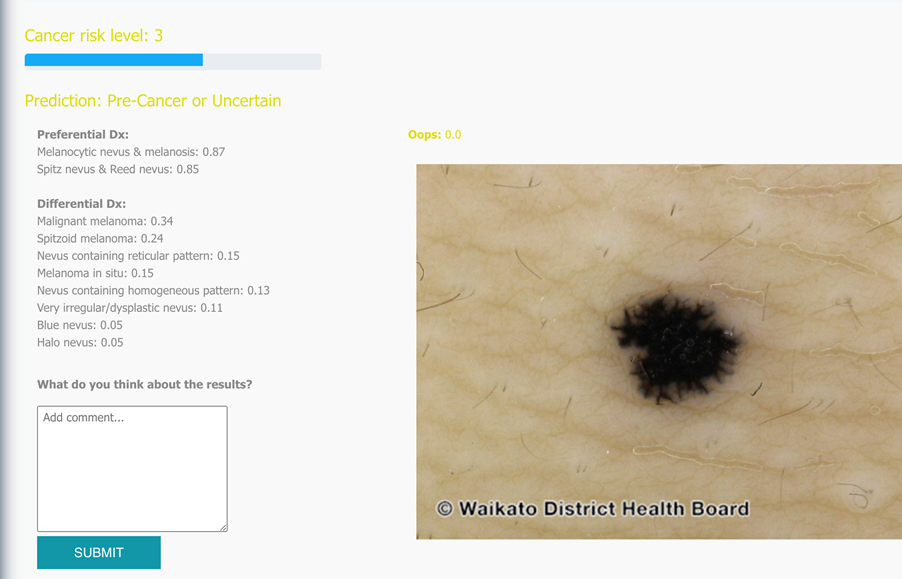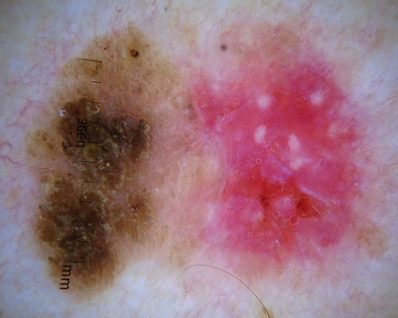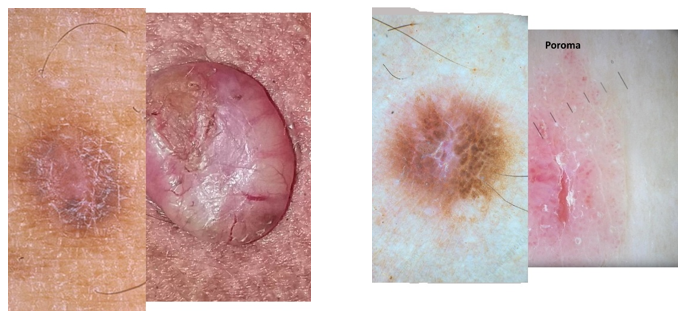Skin cancer is the most common cancer in the world. It is is deadly at late stage but can be cured with high survival rate if being detected early.
Supported by iToBoS project, Torus AI (previously Torus Actions) has developed a novel AI solution for early detection of skin cancer namely Skin Cancer AI. It can detect up to 12 types of melanoma which are the most deadly skin cancers, 38 types of non-melanoma skin cancers, and more than 70 other types of skin lesions.
Here is how Skin Cancer AI output looks like:
 test image is a Spitz nevus, taken from https://dermnetnz.org/
test image is a Spitz nevus, taken from https://dermnetnz.org/
If you are asking: why does the AI return several classes instead of showing only one class with highest confidence? That is definitely a good why. The reason comes from the collision tumors and borderline cases. So what are they?
Collision tumors are skin lesions comprised of two or more distinct cell populations that maintain distinct borders. Collision tumors can be composed of benign tumors, malignant tumors or a mix of them. While collision tumors are uncommon, they can be a source of confusion for one-class prediction AI models.
Here is one example of collision tumor: seborrheic keratosis on the left and Basal Cell Carcinoma (BCC) on the right.

Another source of confusion is borderline case, that is, when a tumor presents typical features of different classes at the same time and it is extremely hard to classify the tumor into only one class. Borderline cases are not uncommon in practice and dermatologists usually need to do biopsy to get a conclusion for those cases. For example, Spitz nevus is a benign skin tumour but it may look very similar to a melanoma. Therefore, Spitz nevus is often excised as a precaution.
To make Skin Cancer AI more robust with collision tumors and borderline cases, we use sigmoid value instead of softmax value for prediction. As a result, the AI return several classes with relatively high confidence instead of showing only one class with highest confidence.
Since collision tumors are uncommon hence under-represented in our dataset, we generated several synthetic collision images and used these extra images during training process. Here are examples of synthetic collision images:

At the end, Skin Cancer AI is capable of predicting collision tumors and borderline cases which are challenging for dermatologists.
